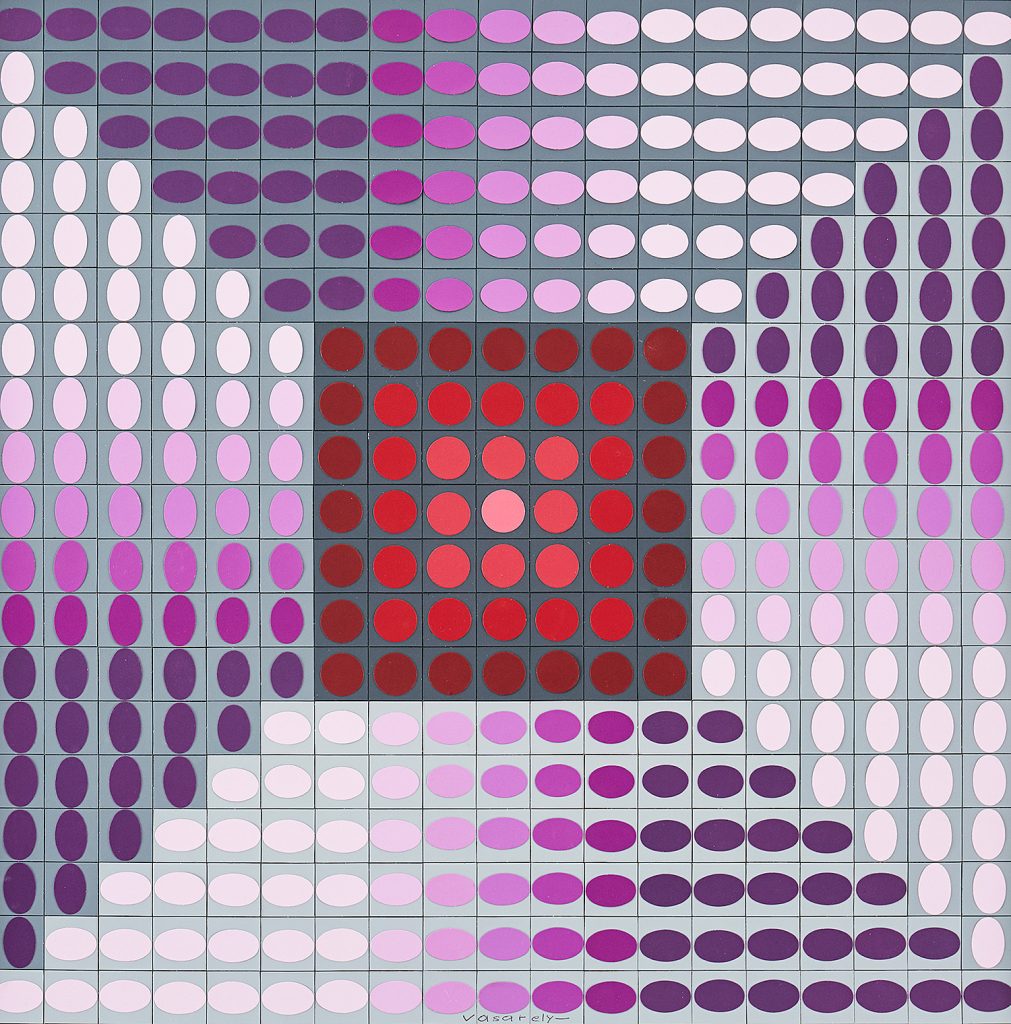Aktuella auktioner
Se datum och information

The Hungarian born Victor Vasarely became famous during his lifetime through his ability to distinguish himself from contemporary art with the creation of a new movement called optical art. Unlike many other artists, Vasarely did not know that he was to become one.
Throughout his early life, he found himself more drawn towards the sciences than the arts; an interest that encouraged him to apply for the University of Budapest’s School of Medicine where he studied for two years. The formal scientific training provided him with a strong sense of scientific method and objectivity. When he made his life-changing decision to pursue a career in art instead of medicine a few years later, he was probably not aware of that his first years of studies would prove to be very useful even within his artistry. His further studies at Muhely, known as the Bauhaus of Budapest, led him to discover constructivism and abstract art. Artists like Wassily Kandinsky, Paul Klee and Walter Gropius became important role models for the young Vasarely as they introduced him to the formal and geometrical style of art. A theory that the sciences had reached the limits of what could be explained began to take form, and the answer according to Vasarely was to combine science with art so that the scientific models could be visually comprehensible.
Like many other artists, Vasarely eventually moved to Paris. His artwork from this early period is very graphical and laid the foundation for his further development towards a more optical form of art. He brought together objects of varying size and scale with richly coloured backgrounds of rhomboids, and experimented with the checked design. The instant pattern and the appearance of depth despite the absence of a subject introduced Vasarely to the vibrating effect of combining geometrical patterns. This revelation had a significant impact on his artistry and can be considered to be a precursor to his later optical art. He made his first paintings in the 1940’s, first in black and white and later in colour. They presented geometric abstractions that evolved into an optical phenomenon, a development from his graphic period that was very successful. The movement from paintings that evolved from representational images to abstract works composed entirely of geometric shapes occurred only a few years later.
The works included in this sale by Vasarely i Vasarely (lot no. 361, 378, 379) includes both an early work from 1948, and two later optical collages. During the 1940’s he was deeply influenced by abstract expressionism and surrealism, visible in the vivid composition from 1948 through his interacted warm colours and painted animated surface with geometric forms. His later works shows depth and movement and provide the viewer with energy.